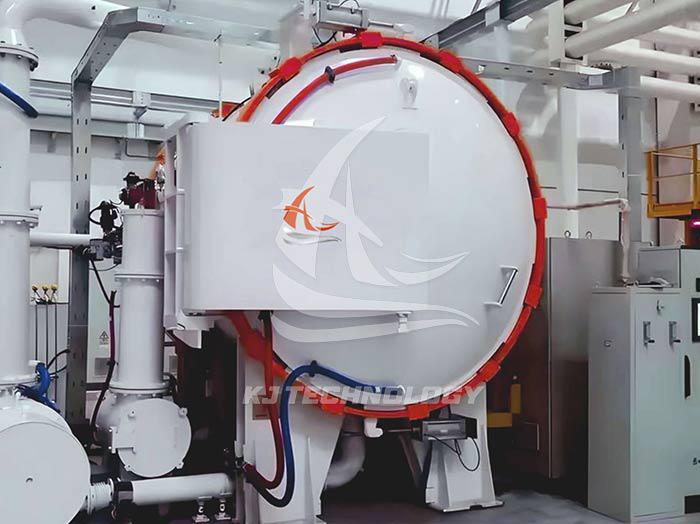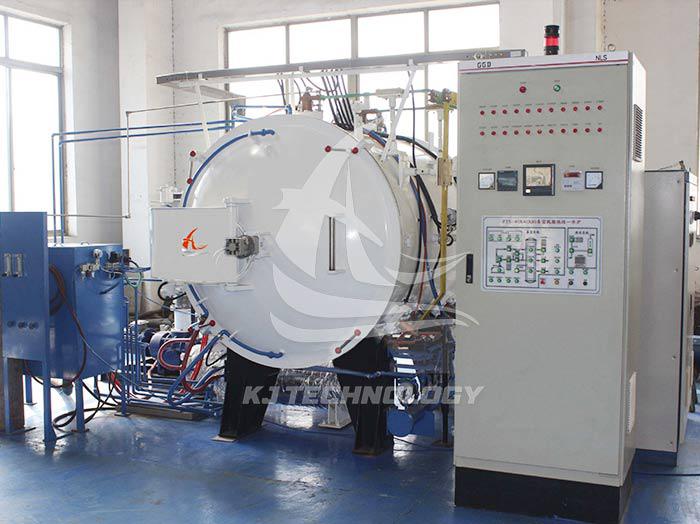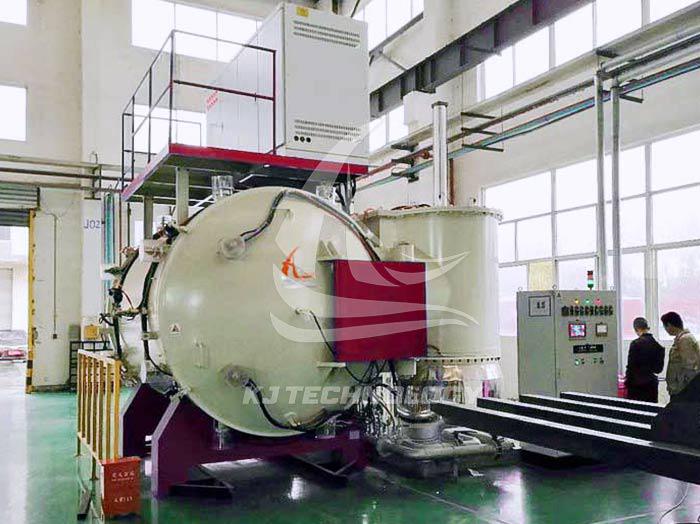Working principle of electric heating vacuum annealing furnace
 04-17-2025 Author: KJ technology
04-17-2025 Author: KJ technology
A vacuum annealing furnace is a device used for heat treatment of materials in a vacuum environment, mainly used to eliminate internal stress, improve the microstructure of materials, and enhance their properties. The following is a detailed explanation of the working principle of a vacuum annealing furnace:
1. The role of vacuum environment
Removing impurities: A vacuum environment can remove oxygen, water vapor, and other gases from the furnace, preventing materials from undergoing oxidation, decarburization, or other chemical reactions at high temperatures.
Cleaning the surface: Vacuum helps to remove contaminants from the material surface and improve surface quality.
Promote uniform heating: In a vacuum state, heat conduction mainly occurs through radiation, allowing materials to absorb heat more evenly.
2. Heating system
Heating method:
Resistance heating: The most common heating method is to generate heat by passing current through a resistive material.
Induction heating: By generating eddy currents in conductive materials through electromagnetic induction, heat is generated.
Electron beam heating: Using a high-speed electron beam to bombard the surface of a material, causing it to rapidly heat up.
Temperature control: High precision temperature control system, such as PID controller, is used to ensure that the temperature inside the furnace changes according to the set process curve.
3. Vacuum acquisition and maintenance
Vacuum pump assembly:
Mechanical pump: used for preliminary vacuuming, reducing the pressure inside the furnace to a low vacuum range (about 10 ⁻ ³ Torr).
Diffusion pump or turbo molecular pump: used in high vacuum range (up to 10 ⁻⁶ Torr or lower).
Vacuum gauge: monitors the vacuum level inside the furnace to ensure that it meets the required vacuum level for the process.
Valve system: controls the start and stop of the vacuum pump and the inflow and outflow of gas, maintaining the vacuum environment inside the furnace.
4. Technological process
Loading: Place the materials to be processed into the furnace and seal the furnace door.
Vacuumization: Start the vacuum pump unit to evacuate the furnace to the required vacuum level.
Heating: Heat the material to the annealing temperature according to the set temperature curve.
Insulation: Maintain at annealing temperature for a certain period of time to release internal stress and improve the microstructure of the material.
Cooling: After the insulation is completed, control the cooling rate to slowly cool the material to room temperature.
Breaking the vacuum: After the material cools down, introduce inert gas (such as nitrogen) or atmosphere, open the furnace door, and remove the material.
5. Key parameter control
Temperature: Accurately control the annealing temperature to ensure that the material achieves the expected performance.
Vacuum degree: Maintain a high vacuum environment to prevent material oxidation or contamination.
Heating and cooling rates: Control the heating and cooling rates to avoid new stresses or deformations in the material.
Insulation time: Set an appropriate insulation time based on the material type and annealing purpose.
6. Advantages
High quality surface: The vacuum environment avoids oxidation and pollution, and the material surface quality is high.
Performance improvement: After annealing, the internal stress of the material is eliminated, the grain structure is improved, and the performance is enhanced.
Process flexibility: Process parameters can be adjusted according to the requirements of different materials.
7. Application Fields
Metal materials: used for annealing, quenching, tempering and other heat treatments to improve the mechanical properties of metals.
Semiconductor materials: used for annealing wafers and repairing lattice damage caused by ion implantation.
Optical materials: used for annealing optical components, eliminating internal stress, and improving optical performance.
Aerospace: Used for heat treatment of high-temperature alloys to improve their high temperature resistance and corrosion resistance.
8. Precautions
Safe operation: When operating a vacuum furnace in high temperature and vacuum environments, safety operating procedures must be followed.
Equipment maintenance: Regularly inspect and maintain vacuum pumps, heating elements, and control systems to ensure proper operation of the equipment.
Material selection: Select appropriate process parameters based on the characteristics of the material and annealing requirements.








